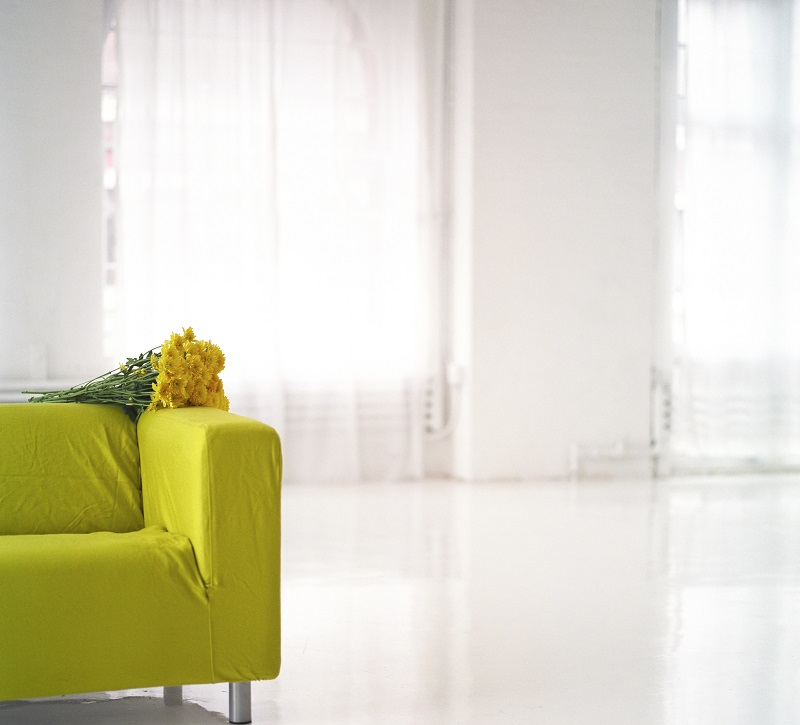Heat gain

|
[edit] Introduction
Heat gain is the term given to a temperature rise within a space due to heat from the sun (solar radiation), heat from surfaces (long wave infrared radiation), heat originating from other sources within the space (such as heating appliances, ovens, people, mechanical systems, lights and computers) and so on. It is the heat that is gained from such sources that changes the prevailing temperature within the space.
Heat gain can be positive, for example providing 'free' heating to spaces on sunny but cold days, or it can be negative, overheating spaces in the summer so that they are uncomfortable to occupy.
[edit] Contributory factors
A south-facing conservatory, for instance, in an uninhabited house may see considerable solar heat gains on a daily basis, particularly in summer, but no heat gains from heating appliances and people. In contrast, a north-facing room in winter may receive very little solar heat gains but be warmed by considerable heat from central heating, lights and people. Generally, excessive heat gains will create overheating which may have to be tempered by opening a door or window or activating the cooling systems.
In calculating the heat gain within a property, for instance when sizing an air conditioning system, engineers must assess the orientation of the building, the nature of its construction, size and location of windows, type of occupation and so on.
Various features can be used to limit solar heat gain, including:
- Shading systems.
- Limiting the number or area of openings.
- Orientating openings away from the sun path.
- Reducing solar transmittance through openings, for example, by reflective glazing.
- Ventilation.
- Insulating the building envelope to prevent the transmission of indirect solar gains (ie through external walls).
- Reducing the solar absorptance of the building envelope (eg white-coloured surfaces can reduce heat transfer into buildings).
- Reducing the urban heat-island effect.
- Planting to provide shading and to reduce the solar absorption of roofs.
In an office environment, calculating the mechanical cooling required will have to consider the plethora of plug-in devices such as computers, monitors, photocopiers, projectors, electric kettles and microwaves and so on. The heat load from this sort of equipment (‘plug loads’) has been estimated by ASHRAE (American Society of Heating, Refrigerating and Air Conditioning Engineers) as constituting between 20-50% of the energy used by a building.
The opposite of heat gain is heat loss, which is the heat that is lost through the fabric of the building when the external air temperature is lower than inside the building. The heat is lost through the external walls, floors and roof, and through inefficient doors and windows and other openings. A similar process may be seen in adjacent apartments, where heat transfer will occur in winter through the party walls from one that is heated to an adjacent apartment that has been left unheated.
Part L of the building regulations, 'Conservation of fuel and power', sets liminting parameters on the construction of buildings, their airtightness, the amount of glazing, insulation, power consumption and so on to limit unwanted heat gains.
[edit] Related articles on Designing Buildings Wiki
Featured articles and news
Infrastructure that connect the physical and digital domains.
Harnessing robotics and AI in challenging environments
The key to nuclear decommissioning and fusion engineering.
BSRIA announces Lisa Ashworth as new CEO
Tasked with furthering BSRIA’s impressive growth ambitions.
Public buildings get half a million energy efficiency boost
£557 million to switch to cleaner heating and save on energy.
CIOB launches pre-election manifesto
Outlining potential future policies for the next government.
Grenfell Tower Inquiry announcement
Phase 2 hearings come to a close and the final report due in September.
Progress from Parts L, F and O: A whitepaper, one year on.
A replicated study to understand the opinion of practitioners.
ECA announces new president 2024
Electrical engineer and business leader Stuart Smith.
A distinct type of countryside that should be celebrated.
Should Part O be extended to existing buildings?
EAC brands heatwave adaptation a missed opportunity.
Definition of Statutory in workplace and facilities management
Established by IWFM, BESA, CIBSE and BSRIA.
Tackling the transition from traditional heating systems
59% lack the necessary information and confidence to switch.
The general election and the construction industry
As PM, Rishi Sunak announces July 4 date for an election.
Eco apprenticeships continue help grow green workforce
A year after being recognised at the King's coronation.
Permitted development rights for agricultural buildings
The changes coming into effect as of May 21, 2024.





















